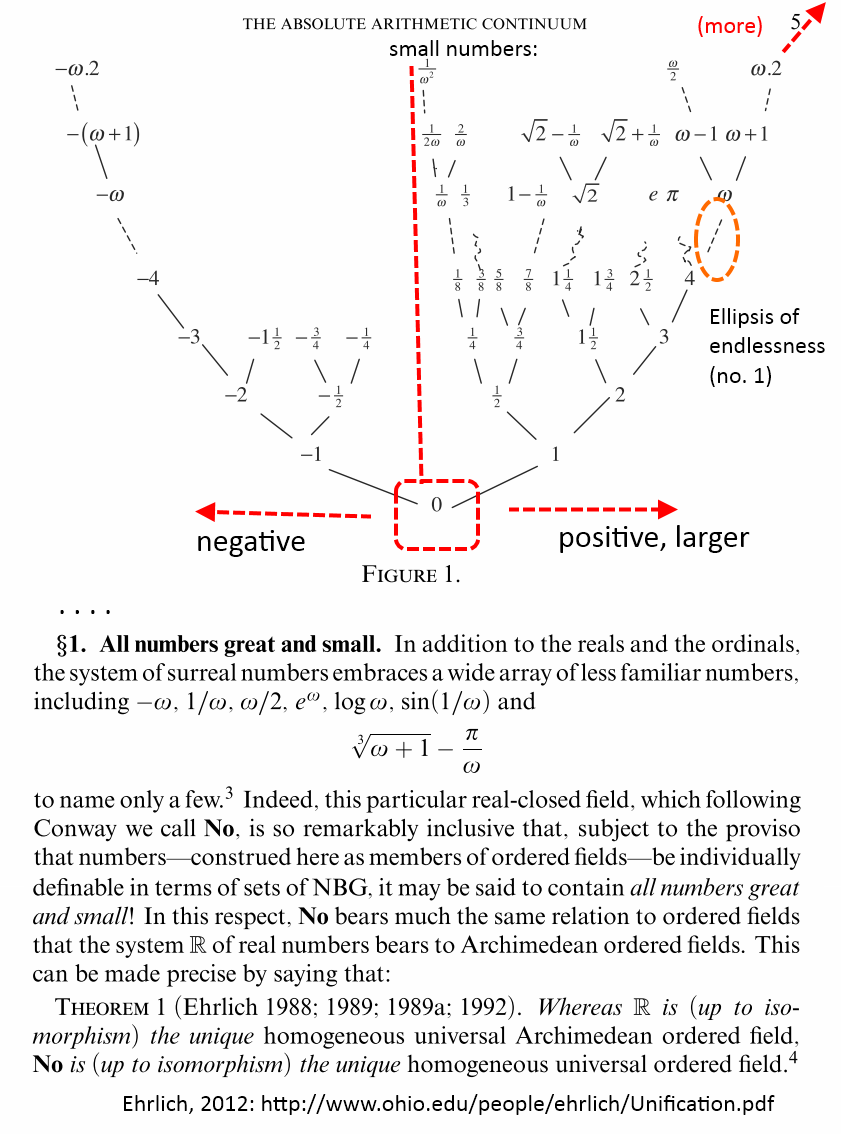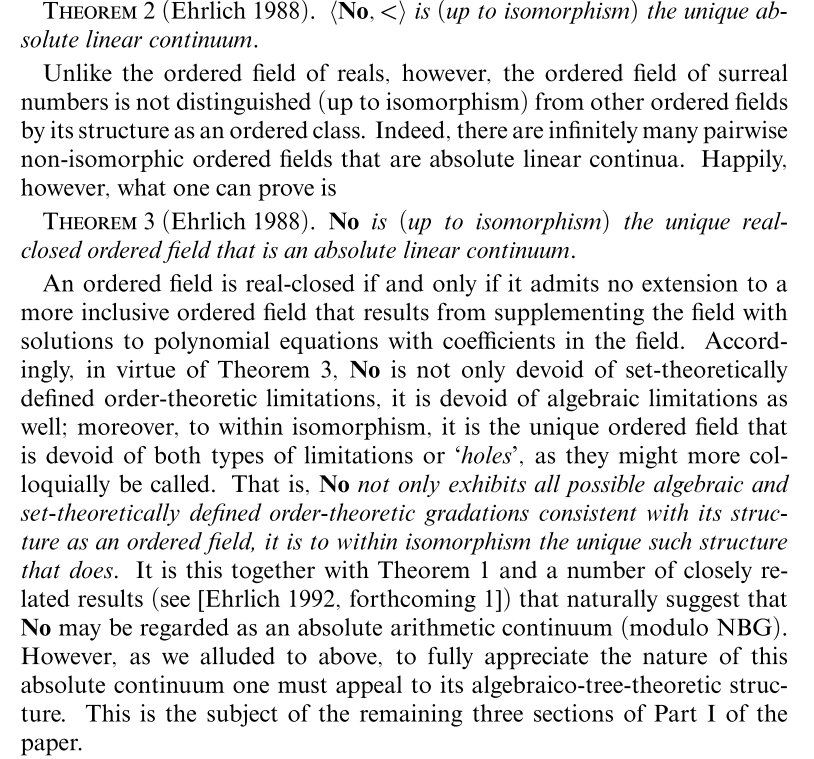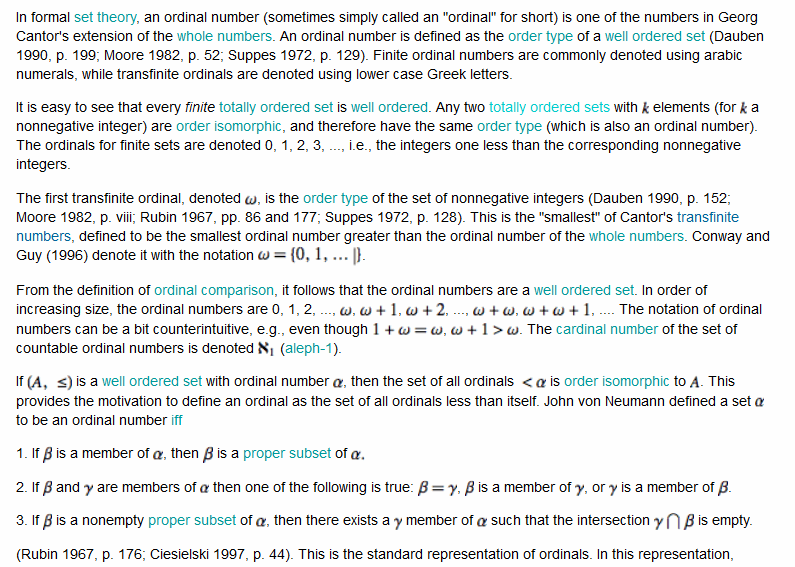Over the past month in response to a suggestion on an infinite temporal past (and the counter argument that such is dubious), there has been quite an exchange on numbers.
In that context, it is worth headlining FYI/FTR, HT DS, a unification with continuum — oops, link — based on surreals discussed by Ehrlich:
where also:
Such of course provides a lot of breathing room for exploring numbers and relationships in a unified context. Attention is particularly drawn to various ellipses of endlessness (not able to be traversed in finite stage stepwise do forever processes) and to both the trans-finites . . . do not overlook ellipses of endlessness within transfinite ranges — and the infinitesimals including what we could call a particularly mild one, 1/omega. (Cf therefore the previously suggested 1/m –> A = omega + g, g a large but finite number.)
Looks like the numbers sandbox is now officially open for play.
There being a live thread, comments may be entertained here on. END
PS: Let me clip Wolfram on ordinals, drawing out that rightmost branch a bit:
PPS: Let me clip from a comment today Mar 1 on Ax Inf:
>>546



PS: For convenience Wiki on Ax inf: